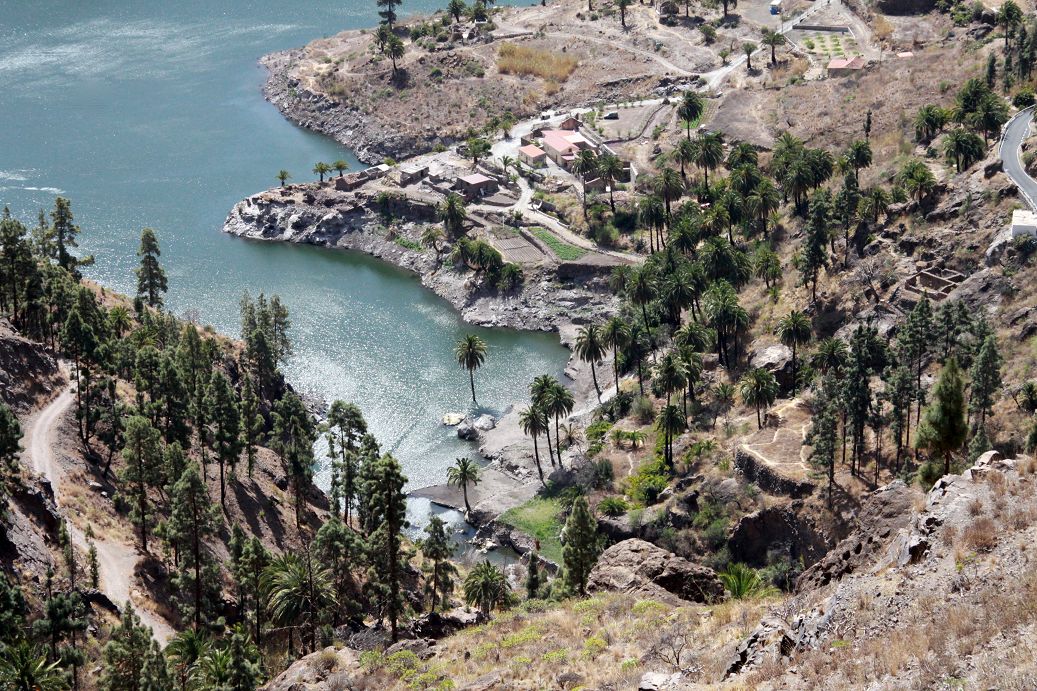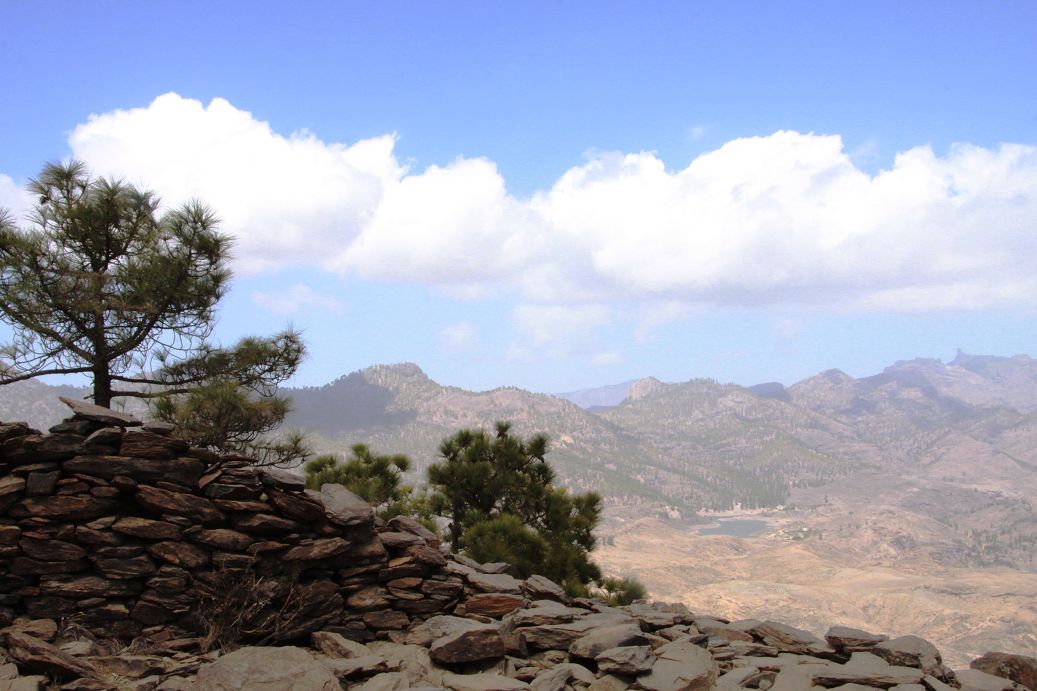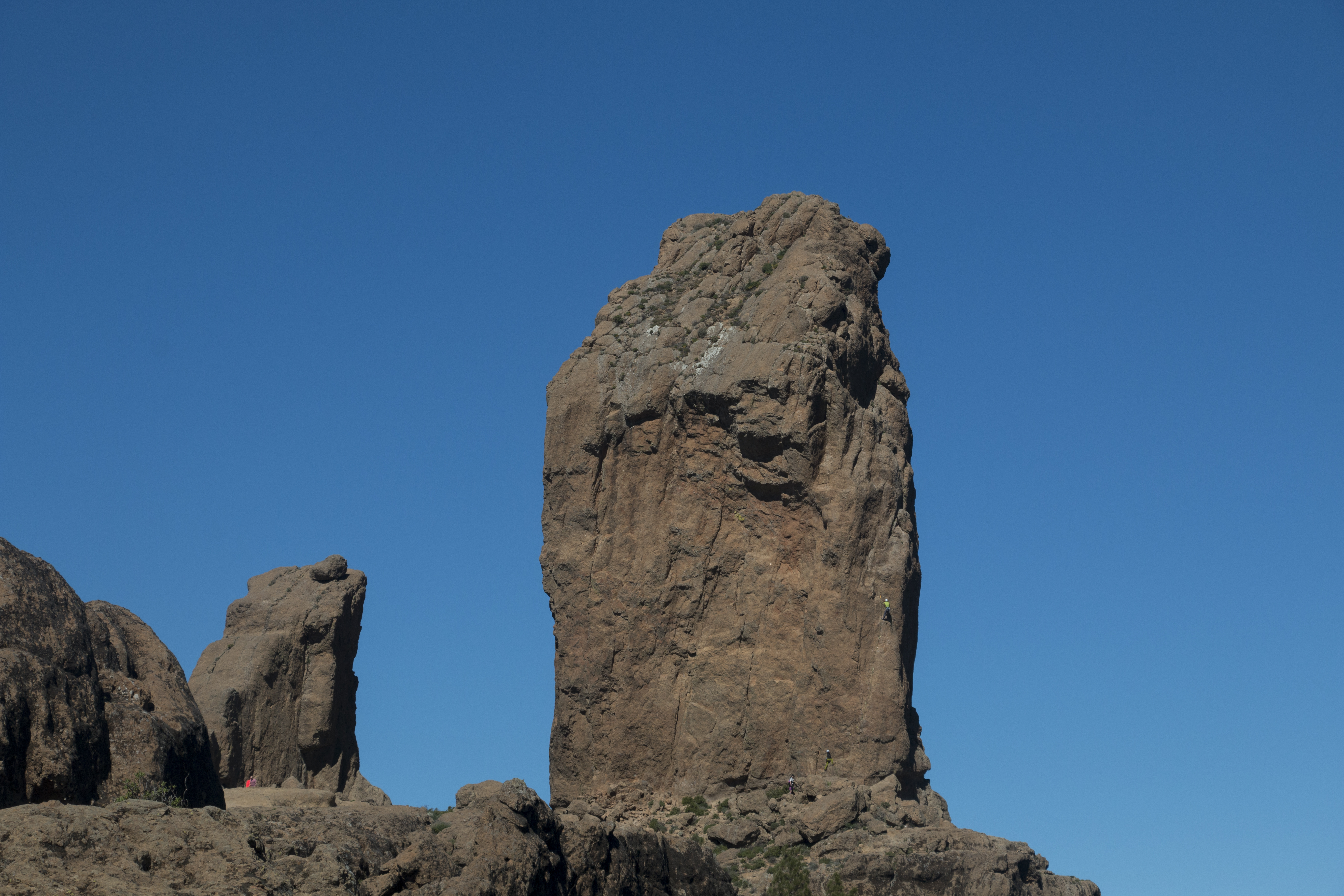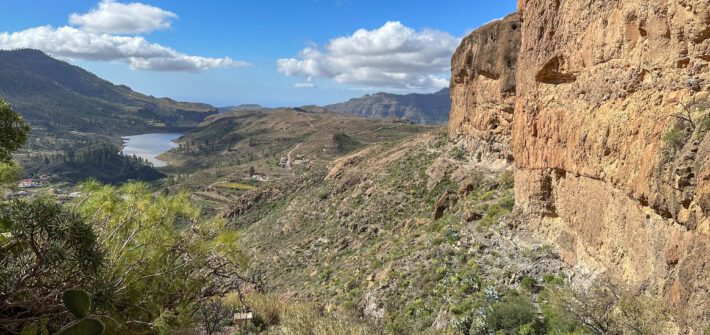Historic place in Gran Canaria with a long history – Cercados de Araña I have named this hike Cercados de Araña, because a large part of it crosses the municipal territory of the small town of Cercados de Araña. The name Araña comes from a family of sugar masters who settled in Tirajana in the […]
Gran Canaria
Gran Canaria in numbers
Gran Canaria, with the capital Las Palmas de Gran Canaria, is the third largest of the Canary Islands in terms of land area with 1532 square kilometres. It is circular and has a diameter of approximately 50 kilometres. But of the population, it is with its nearly 850.000 inhabitants on place two just behind Tenerife. The distance to the African coast is 210 kilometres.
As the island is so rich in contrasts in landscape and has a lot of variety to offer, the island is also often called a miniature continent. Wide areas of the island are protected in 32 parks.
Landscape, climate, vegetation
As on the neighbouring islands, the climate in Gran Canaria is divided in two. The north is more humid and the vegetation greener. And the south of the island is rather dry and warmer. Due to this and the different altitudes, the Canary Island has different vegetation zones.
In the north there were, as still today on the neighbouring islands, until the 15th century mainly laurel forests. But these have disappeared on Gran Canaria except for a few remaining areas. They were cut down because the wood was needed for the construction of the sugar industry at that time. However, there are again numerous Canarian pines in the heights of the island today. The pine stands had also been cleared extensively. But the tough Canarian pine survived.
In the dry beach regions, there are beach bushes and bushes that depend on the salty wind. In the interior you will find Canarian palms, dragon trees, spurge and the viper’s head. Day temperatures on the island average between 18 and 26 degrees all year round.
History, economy and tourism
The name Gran Canaria leads one to believe that it is related to the size of the island. But in fact it does not mean “big Canary Island”, but derives from the Latin word dog (canis) or the Berber tribe Canarii. Originally there are said to have been many dogs on Gran Canaria. Still today the Canarian Great Dane is an island landmark.
On the island the natives lived a very simple life in caves and stone houses. A little of this life can still be seen today in the museums, as for example in the Museo Canario in Las Palmas and in the Museo de la Rama in Agaete in the northwest. There are old Canarian finds or in Agaete a village with scenes from the life of the old Canarians. In the 15th century the Spaniards conquered the island.
The main source of income today is tourism. Around 3 million people visit Gran Canaria every year. Main center of tourism is the south of the island with the places Maspalomas and Playa del Inglés. Gran Canaria is also a popular holiday destination for homosexuals. The annual carnival with its South American flair is colourful and diverse like the whole island.
Interesting to know that Las Palmas de Gran Canaria in 2019 is also described as one of the 11 best places for digital nomads.
Sights on Gran Canaria
The island’s attractions include the white dunes of Maspalomas, the cave houses of Artenara, the drinking water dam in the Barranco de Arguineguin and the striking Roque Nublo in the centre of the island. But this is by far not all to do justice to the many possibilities that Gran Canaria offers for culture seekers, athletes and hikers.
Gran Canaria is also very popular with cyclists. Everywhere you will see them cycling on roads and paths. Accordingly, there are also many small bars that specialize in refreshment for cyclists.
Hiking in Gran Canaria
The term “miniature continent” also refers to the varied nature that awaits you in Gran Canaria. Besides volcanoes you will find thelarge white dune fields of Maspalomas in the south as not only a strong colour contrast. There are barrancos, reservoirs and subtropical valleys. The highest volcano of the island is the Pico de las Nieves with its 1.949 meters. In its neighbourhood is also the above mentioned 1813 meter high Roque Nublo. Daring climbers try their hand at this rock. Those who only want to do a small hike will definitely walk on the small circular path around this striking rock.
But Gran Canaria offers wonderful hiking tours around the whole island. I especially like the hike in the western part of the island through lonely Barrancos to the remote beach of Güi Güi. For those who prefer to go inland to the mountains, we recommend the hike through the nature reserve Inagua.
The island of Gran Canaria with its numerous nature parks has much more to offer than just the tourist strongholds in the south. If you want to get more information, you can do this here on the official homepage of Gran Canaria.
Barranco de Las Vacas – Hiking circuit through remote gorges
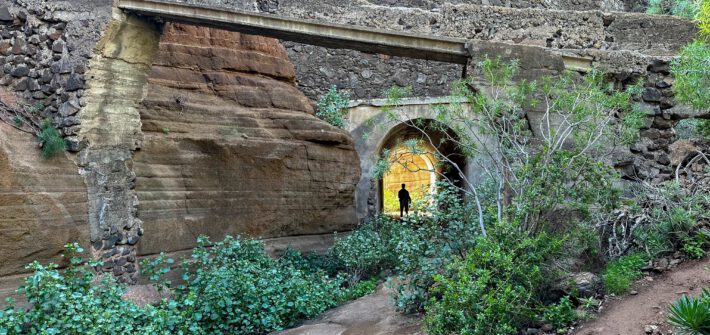
Barranco de Las Vacas – a well-known tufa gorge on the east side of Gran Canaria The Barranco de Las Vacas, known by its name, was once an insider tip on Gran Canaria. Unfortunately, it has long since ceased to be so. In the social media, you can find an endless number of posts and […]
Small circular hike from San Bartolomé de Tirajana via Cruz Grande
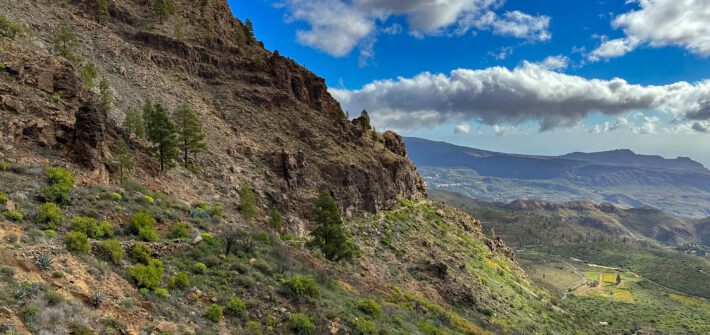
Cruz Grande and the small town of San Bartolomé de Tirajana The Cruz Grande is a pass located at 1249 metres above sea level. The saddle is also called Degollada de la Cruz Grande. From up there, you can enjoy views of two different valleys. On one side you can see the Caldera de Tirajana […]
Pico de Las Nieves – Impressive hike on the Cumbre from Cruz Grande
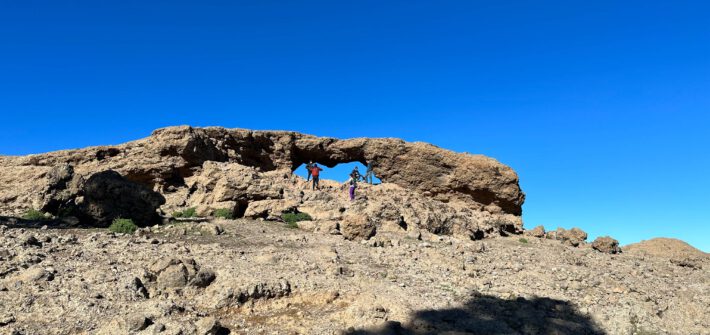
Pico de Las Nieves – the second highest peak on Gran Canaria The Pico de Las Nieves is the second highest peak on Gran Canaria after the Roque Nublo with its 1949 metres. If the weather is good and the Cumbre is not surrounded by clouds, you can enjoy wonderful views over the mountain ranges […]
Santa Lucia de Tirajana – Great Hiking Circuit via Cruz del Siglo and the Cumbre
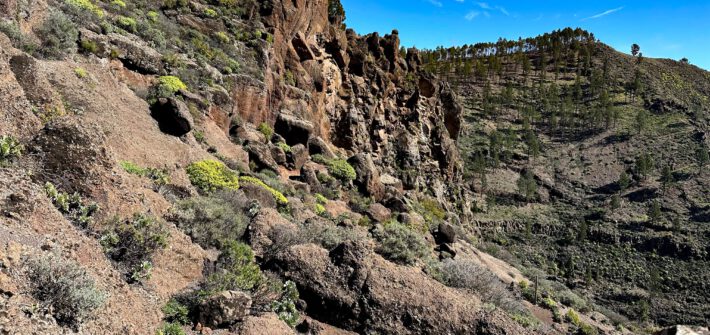
Gran Canaria Round Trip on the Cumbre High above Santa Lucia de Tirajana This large circular hike from Santa Lucia de Tirajana has it all. With almost 18 kilometres and over 1,200 metres of altitude gain, there is something for the ambitious hiker to do. But in return, you will experience a varied and impressive […]
Becerra – a contemplative panoramic tour of the island centre
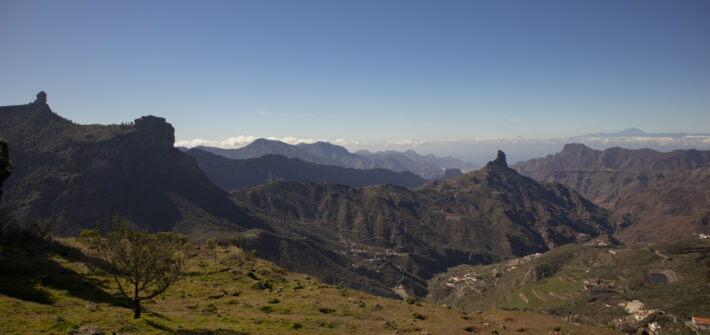
Mirador Degollada de Becerra with beautiful views The varied round tour in the centre of the island starts at the Mirador Degollada de Becerra viewing platform. It is located on the GC-150, which leads to the highest point of the island, the Pico de las Nieves (1948 m altitude). But also at the Mirador Becerra […]
Varied circular walk Santa Lucia – La Fortaleza

Circular walk from Santa Lucia over the Fortaleza and the reservoir La Sorrueda On this diversified round tour, which starts in the mountain village Santa Lucia at an altitude of approximately 710 metres, you will get to see a lot of things besides the Canarian villages Santa Lucia and La Sorrueda. The hike takes you […]
Big round walk through the Barranco de Guayadeque
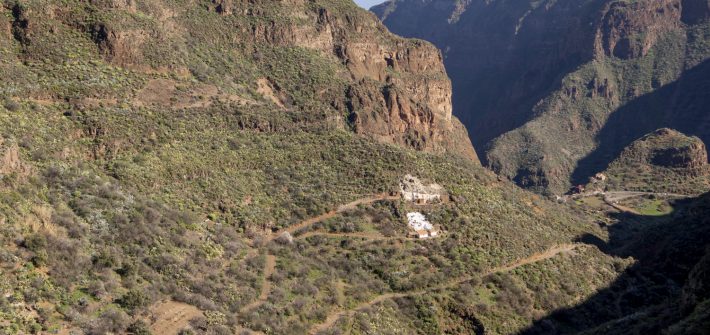
The Barranco Guayadeque – spectacular hike on old Canarian territory The Barranco de Guayadeque in Gran Canaria is a very special barranco. Not only the size and the special length of the canyon with 11 kilometres as also the steep rock walls impress but also the wild nature and the numerous traces of the former […]
Great circular walk from Soria around Lake Chira

Lakes Hiking tour from Soria to Chira Lake Today’s hike on Gran Canaria starts in Soria. It does not only lead you through two small typical Canarian villages. The special feature is the crossing of the gigantic dam wall of Lake Soria. Then you hike to the top of the Lomo de la Palma. But […]
Nature Reserve Inagua Gran Canaria – rugged rock walls, pine forests and a unique fauna and flora
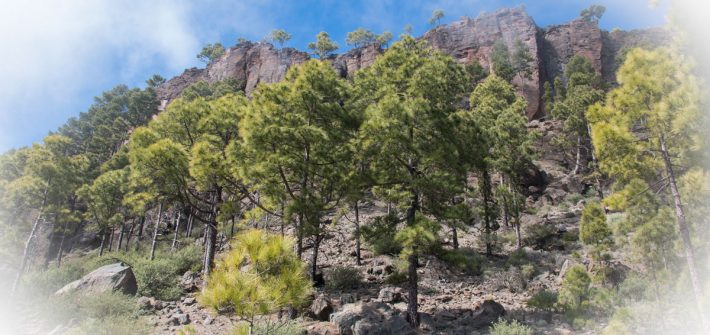
Today’s hike on Gran Canaria through the Inagua nature reserve begins and ends with a walk through an impressive steep face. If you look up from the starting point, the Degollada de Aldea, you won’t believe that there is a path leading up there. The path follows the rocky outcrop and will lead you through […]
